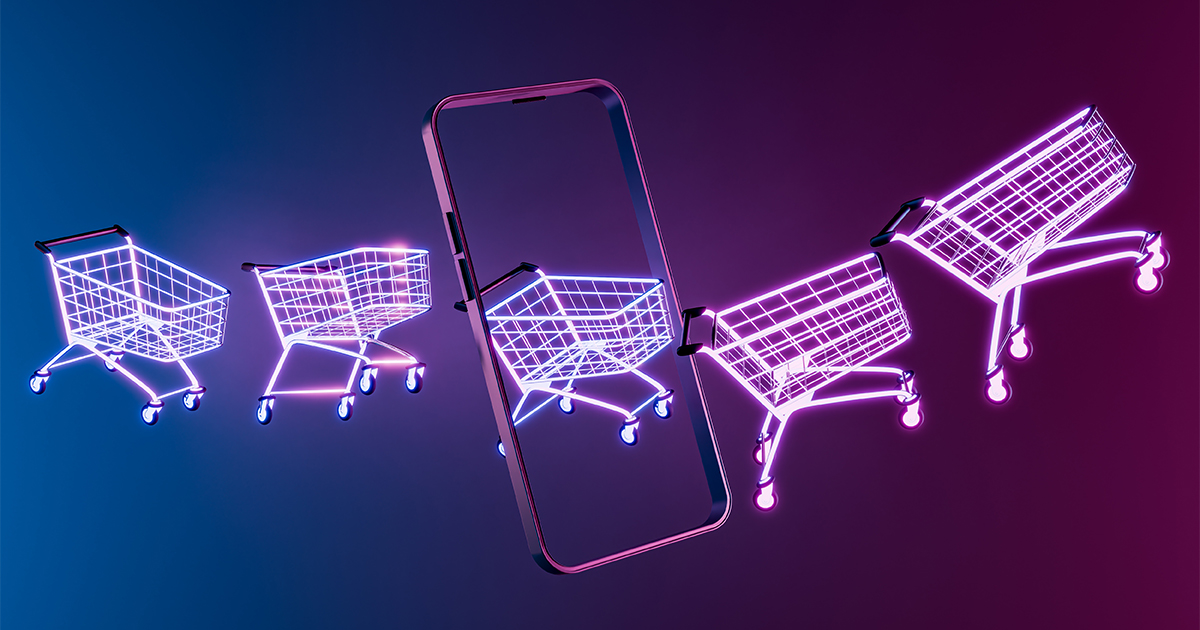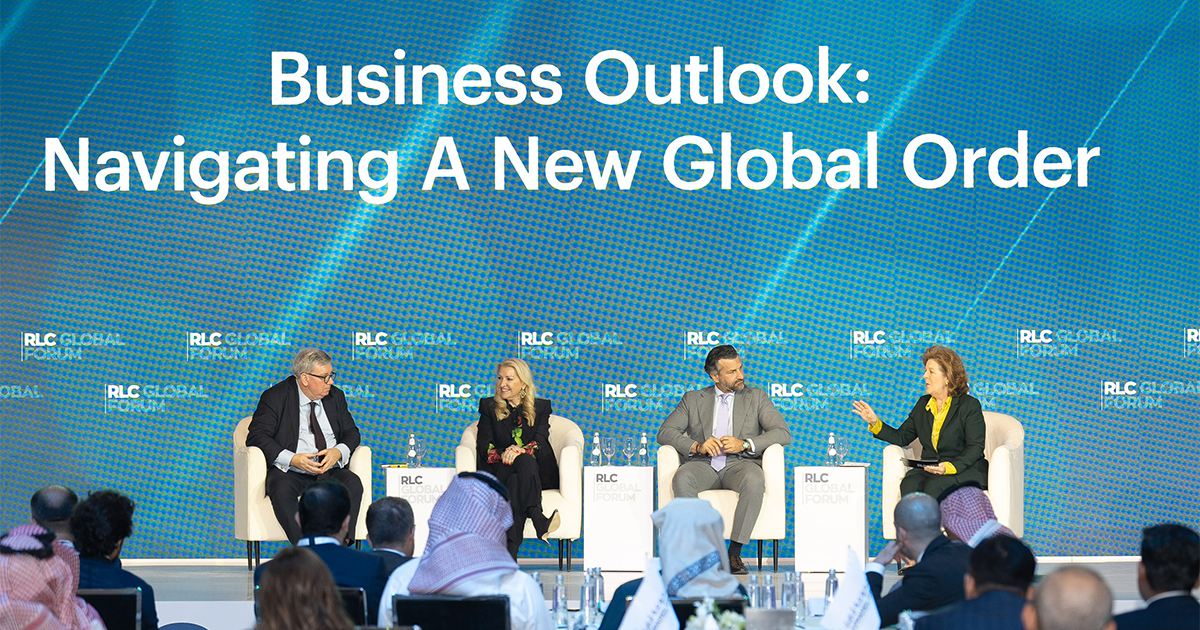In a world where digital and physical boundaries increasingly blur, social commerce is revolutionizing how consumers shop, connect, and build relationships with brands. This transformative force is reshaping the retail ecosystem by driving cultural relevance, creating immersive experiences, and redefining consumer relationships. At the 2025 RLC Global Forum session featuring Shant Oknayan, VP of Global Business Solutions at ByteDance, in conversation with Joe Abi Akl, Partner and Head of Retail & Consumer at Oliver Wyman, the discussion explored how brands can move beyond transactions to build communities, spark meaningful conversations, and foster lasting loyalty. What strategies are needed to navigate this paradigm shift, challenge established norms, and unlock new opportunities for sustainable growth and innovation?
The Rise of Social Commerce: Community Over Transactions
Traditional e-commerce was built on efficiency, speed, variety, and price. However, consumer behavior is shifting, with shoppers looking for more than just convenience. Social commerce is rapidly growing, blending entertainment, social interaction, and retail into a seamless experience.
Rather than simply purchasing products, consumers now engage with brands through content-driven storytelling, influencer-led shopping, and community recommendations. This shift is particularly evident in the GCC region, where social commerce is growing at an annual rate of 30%, with 20% of Saudi consumers already making purchases through social platforms.
The model pioneered in China through platforms like Douyin (TikTok’s Chinese counterpart) has demonstrated how short-form video, AI-driven recommendations, and live shopping can create highly engaged retail ecosystems. Middle Eastern consumers are following suit, making social commerce one of the fastest-growing digital retail segments in the region.
Key Drivers of Social Commerce
- The Power of Consumer Communities
Consumer trust has shifted from brand-led marketing to peer-driven recommendations. Online communities such as MomTok (parenting products), PetTok (pet care and accessories), and BeautyTok (cosmetics and skincare) have become trusted sources of product discovery. Viral trends like “TikTok Made Me Buy It” have reached billions of views, showing how peer validation is now more influential than traditional advertising.
- 1 in 2 consumers is influenced by content-driven communities, and 85% of users have purchased a product after seeing it on social media.
- The Rise of “Shoppertainment”
The fusion of shopping and entertainment has changed how consumers discover products. 79% of shoppers say they are more influenced by engaging content than by traditional discounts. 81% prefer an all-in-one shopping experience, where discovery, engagement, and purchasing happen on the same platform.
This trend has fueled the success of short-form video platforms like TikTok, where brands leverage influencer partnerships and user-generated content to drive sales through storytelling rather than direct promotion.
- AI-Driven Personalization & Live Shopping
AI is revolutionizing e-commerce by predicting consumer preferences, automating content delivery, and optimizing ad performance. The success of live shopping, a $500 billion industry in China, has demonstrated how real-time interaction can boost conversion rates and deepen brand engagement. Live shopping is expanding beyond beauty and fashion—consumers are now purchasing luxury goods, automobiles, and even real estate through live-stream events. In London, a luxury retailer recorded a single client spending over €80,000 in one month through live shopping.
The PACE Framework: A Strategy for Social Commerce Success
To succeed in social commerce, brands must adopt a structured approach to engaging consumers. The PACE framework—Personas, Assortment, Content, and Enablement—provides a roadmap for businesses looking to thrive in this space.
- Personas: Understanding Audiences Beyond Demographics
Traditional segmentation based on age or gender is no longer enough. Brands must target consumers based on interests and behaviors.
Example: Samsung customized its product messaging for different interest groups:
- Beauty influencers were shown camera features.
- Tech enthusiasts received AI and processing power insights.
- Young professionals were targeted with battery life and work applications.
- This interest-based targeting resulted in a 63% increase in order value and a 50% boost in consumer engagement.
- Assortment: Creating Exclusive & High-Value Bundles
Curating the right product mix is essential.
- Exclusive product drops drive urgency and engagement.
- Bundles increase basket sizes and GMV (Gross Merchandise Value).
- Hero products attract traffic to broader product categories.
- A beauty brand in South Korea bundled hero products, leading to a 200% month-on-month GMV increase.
- Content: Always-In, Not Always-On
Content must be culturally relevant, leveraging short-form video, influencer collaborations, and user-generated storytelling.
- Example: Nivea built a library of diverse content, balancing branded storytelling with authentic creator-driven videos, resulting in a significant increase in engagement and conversion rates.
- Enablement: Aligning Internal Teams
Many brands struggle with fragmented digital strategies, where marketing, e-commerce, and sales teams operate in silos.
- L’Oréal successfully unified its marketing, digital, and sales divisions under one leadership structure, resulting in seamless execution across channels.
The Future of AI in Social Commerce
AI is not just about automation—it is about augmenting human creativity.
- TikTok Symphony and BytePlus AI solutions analyze social trends, create dynamic ad content, and automate real-time audience targeting.
- AI-driven shopping assistants, extended reality (XR), and interactive commerce experiences will soon redefine digital retail.
- AI-powered retail personalization has already increased conversion rates by up to 25% in global markets, demonstrating its transformative potential for e-commerce.
Key Statistics
- 70% of Gen Z consumers now use social media as their primary source of product discovery.
- AI-driven personalization has increased retail conversion rates by 25%.
- Social commerce in Saudi Arabia is growing at an annual rate of 30%, with 20% of consumers already shopping through social platforms.
“The role of communities online is to showcase and describe products better than brands do. Consumers want to hear from other consumers, from their favorite creators, and from the communities they trust. This is the shift from ‘add to cart’ to ‘add to culture.’”
- Shant Oknayan, ByteDance/TikTok







